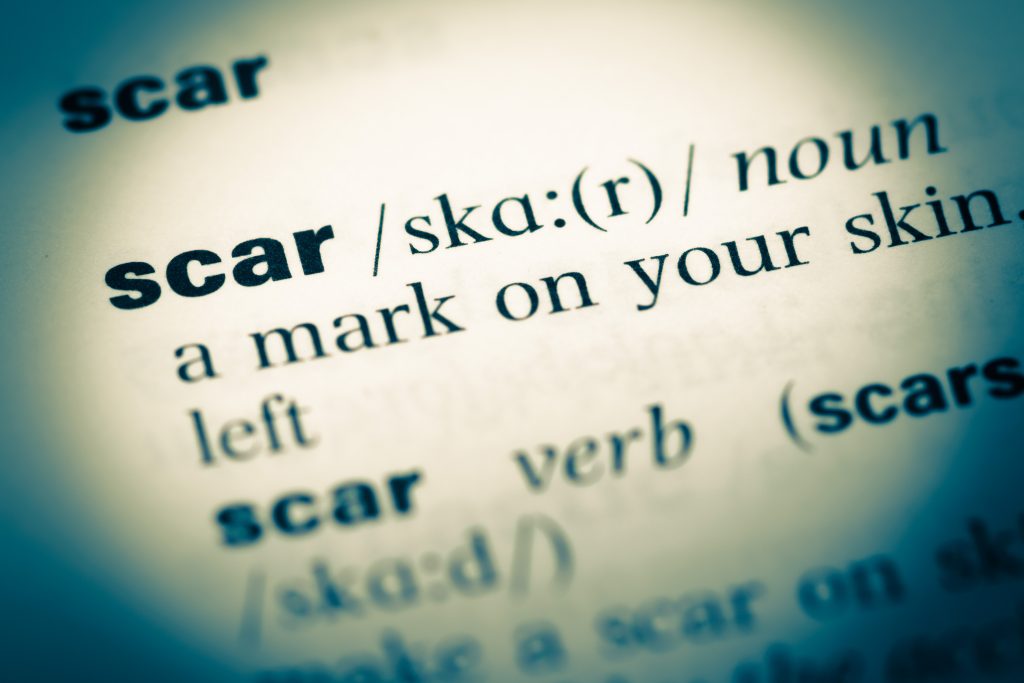Question: Can anything be done to improve my scar?
Dallas plastic surgeon Dr. Kenkel answers:
We routinely see patients who inquire about scars they have and if there is anything that can be done to help improve them. In order to determine whether a patient may be a candidate for “scar therapy,” in our Dallas office, there are several questions we ask:
- What is the scar from? Surgical scars and clearly different than scars from injury. Scars from surgery are typically well-controlled incisions that have little or no associated trauma to the tissues. This is important, as they tend to heal better than scars associated with trauma or an injury.
- How old is the scar? The saying “time heals all wounds” certainly can be applied to scar maturation and treatment. We know that most scars get better with time. If the scar is from a recent procedure or trauma, the best thing often to do is to wait and watch. The exception to this rule would be if there was evidence of a keloid or hypertrophic scar. In these cases, intervention may be warranted.
- Is there a personal or family history of bad scarring? There is no question that if the patient has a history of bad scarring, then they may be at an increased risk for developing another one. Even a family history may predispose one to a higher risk for a bad scar. Patients with darker skin may be at a slightly higher risk for developing a bad scar.
If we decide that there is something we can do to help improve the quality and/or appearance of the scar then we match the treatment to the specific issue with the scar.
- Thick scar: We will usually begin by treating a thick scar with injection therapy. The agent I have used most commonly over the past decade has been 5 Fluorouracil (5FU). This is actually a cancer drug that has been shown to help soften scars when injected into the scar. Because the injection is local into the scar, it does not have any effects on the rest of the body. We will usually perform injections every 10 to 14 days. In my hands, I have had fewer side effects with 5 FU than I saw with injections with a steroid. Complications from steroid injections can include thinning of the skin, creation of small blood vessels, and loss of fat in the area. In some cases, the scar can be very thick or even impair function. In those circumstances, we often add a fractionated erbium laser to the treatment to help “thin” the scar. If it is a small localized area, then this could be performed in the office under a local anesthetic. If the scarring is more extensive, we may elect to perform the procedure in the operating room under general anesthesia. The fractionated erbium laser treatments are performed every 6 to 8 weeks and soften the scar and decrease its thickness, often improving appearance and function.
- Red scar: While the natural progression of a red scar is to lighten with time, there may be circumstances when a patient would like to speed up the process. In those circumstances, a laser may be used to lighten the scar. We use either intense pulsed light (IPL) or a green light laser (532 wavelength) to treat the scar. This is often done every 2 to 3 weeks.
- Pigmented scar: In some patients, the scars heal with a darker color. This is most common in patients of color and can be challenging to improve. Depending on the circumstance we may elect to conservatively try a laser or a peeling agent in an effort to try and lighten the scar. In those circumstances, the scar must be pretreated with topical agents to decrease the risk of making the scar darker.
In some cases, we may elect to combine thick scar treatments with red scar or pigment treatments. This often involves injection treatments with laser- or light-based treatments to both reduce the thickness and improve the color of the scar.
In summary, there are options available to help improve the thickness and appearance of scars. That being said, it is important to understand that once you have a scar, there is no way to remove it. Our goal is to make the scar as flat as possible and the same color as the surrounding tissue to allow it to blend in the with the rest of the skin in the area.
Check out more in the before-and-after photo gallery here! Or if you’re ready to take the next step with us, contact us to learn more or schedule your consultation.



Leave a Reply